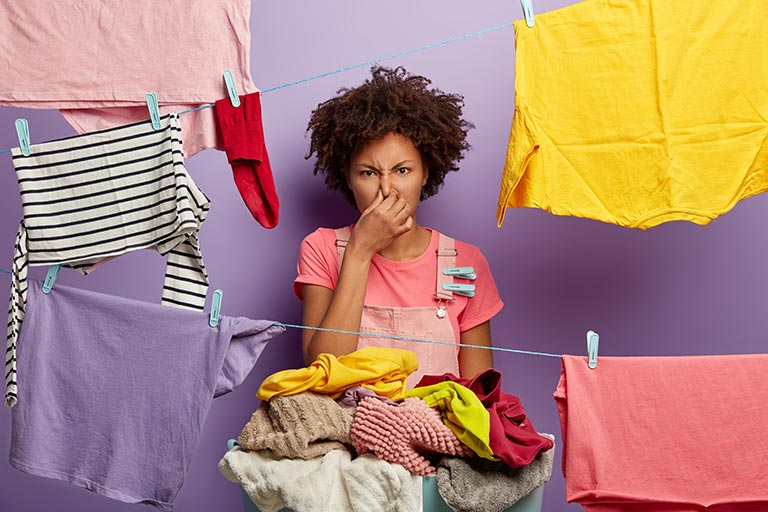
We’ve all seen the commercials: smiling faces burying their noses in freshly laundered towels, inhaling deeply and exclaiming over the delightful scent. Laundry detergent and fabric softener manufacturers have masterfully crafted a marketing narrative that equates fresh laundry with irresistible fragrance. But behind the appealing imagery and enticing scents, a potentially concerning reality may be lurking. Are those blissful deep breaths of “fresh” laundry actually exposing us to a cocktail of harmful chemicals and textile fibers?
The truth is, conventional laundry products, including detergents and fabric softeners, are often packed with a complex mix of chemicals. While these chemicals may create the desired fragrance and softening effect, many are known to be potentially harmful to human health. Fragrances, in particular, are a major concern. Many are synthetic, man-made concoctions that can disrupt hormones, trigger allergies, and even contribute to respiratory problems. Phthalates, for example, are commonly used to extend the life of a fragrance, but they are also known endocrine disruptors. These chemicals can interfere with the body’s hormonal system, potentially leading to a range of health issues.
Beyond the chemicals in the products themselves, there’s another, often overlooked, source of potential harm: textile fibers. Fabrics, especially when new or worn, shed tiny fibers during the washing and drying process. Inhaling these fibers, particularly synthetic ones, can irritate the respiratory system. For individuals with pre-existing conditions like asthma or emphysema, these fibers can exacerbate their symptoms and trigger serious health episodes. Even for those without respiratory illnesses, chronic exposure to inhaled fibers could potentially lead to long-term health problems.
The growing awareness of these potential risks has led to a rise in demand for fragrance-free and “natural” laundry products. These alternatives often market themselves as being gentler on sensitive skin and free from harmful chemicals. While this is a positive step, it also highlights the very real concerns surrounding conventional laundry products.
What’s particularly troubling is the marketing tactic of encouraging consumers to deeply inhale the fragrance of their laundry. This practice, seemingly innocuous, could be significantly increasing our exposure to these potentially harmful substances. If chemicals are being volatilized into the air, and fibers are being released during the laundry process, then actively sniffing the laundry could be driving those substances deeper into our lungs.
This raises serious questions about the need for greater oversight and regulation of laundry product marketing. Should manufacturers be allowed to actively encourage consumers to engage in a behavior that could be detrimental to their health? More research is urgently needed to determine the extent to which smelling laundry results in the inhalation of concerning levels of product chemicals and textile fibers. Such research should investigate the specific chemicals being released, the concentration of these chemicals in the air surrounding freshly laundered items, and the potential long-term health effects of repeated exposure.
If scientific evidence confirms a link between smelling laundry and the inhalation of harmful substances, then manufacturers should be held accountable. They should no longer be allowed to promote marketing campaigns that encourage this potentially dangerous behavior. Consumers have a right to know what they are being exposed to and to make informed choices about the products they use.
In the meantime, concerned individuals can take proactive steps to minimize their potential exposure. Opting for fragrance-free laundry products is a good start. Proper ventilation during the laundry process can also help reduce the concentration of airborne chemicals and fibers. And while that freshly laundered scent might be tempting, perhaps it’s best to resist the urge to bury your nose in your towels and instead prioritize your long-term health. By demanding greater transparency and research, we can push for a future where “fresh” laundry is truly synonymous with clean and healthy.